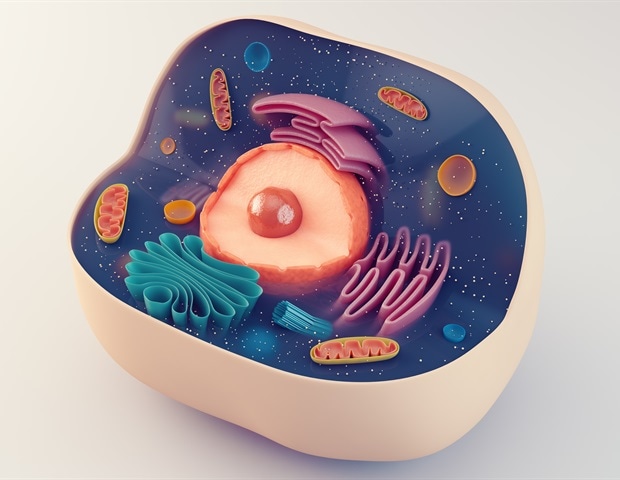Researchers at Tokyo Metropolitan University have discovered how the sponginess and stickiness of stem cell nuclei controls how they “differentiate” into specialized cells. They found that the core starts out like a solid, but becomes more fluid over time. Less force is transmitted to the inner parts, as a result of which the cells undergo a certain path of differentiation. How stem cells select and maintain differentiation pathways remains a crucial question for medical science.
Much of our understanding of biological materials and living systems is biochemical in nature, an intricate patchwork of pathways that connect a variety of complex chemicals. The rapidly evolving field of mechanobiology, however, takes a different approach, examining how living materials respond to physical stimuli such as the softness of the inside and outside of a cell. Complex mixtures such as the inside of a cell have both a spongy, solid-like character (elasticity) and a sticky, liquid-like character (viscosity), which leads to a more comprehensive description of the reaction of materials to forces. This is known as viscoelasticity.
The same is true not only of cells, but of the things that make them up. A team led by Associate Professor Hiromi Miyoshi of Tokyo Metropolitan University studied the nuclei of human mesenchymal stem cells, a type of cell that can mature (or “differentiate”) into a variety of cell types, including muscle, fat, Bones and cartilage. They inserted tiny, inert beads into cores, where they wobbled under the action of the thermal energy in the area. The team studied this movement and measured the viscoelasticity of the core interior, a method known as microrheology. The technology specifies two quantities, the storage and loss modulus, which correspond to the elasticity and viscosity of materials. They focused their attention on nuclei, which differentiated into osteoblasts (bone cells). This was the first time that the viscoelasticity of nuclei was tracked throughout the differentiation process in human stem cells.
As the cells became more differentiated and specialized, the team found that the nuclei became less solid and more fluid-like. When a solid ball of matter is hit, the force is transmitted directly to its core. This is not the case if it is viscous rather than elastic. The more fluid it becomes, the less susceptible the nucleus becomes to external forces while it is differentiating, and it is more and more committed to the path of differentiation it has chosen, a balance between so-called plasticity (ability to react to changes) and homeostasis (resistance to Change). Looking at the distribution of DNA in the nucleus, they found that much of the change in the viscoelastic nature of the nucleus has to do with the aggregation of chromatin, multi-component structures made up of DNA and proteins.
For a long time it was believed that the aggregation of chromatin had everything to do with the suppression of certain genes. The DNA in chromatin is the instruction manual for the synthesis of proteins; Chromatin condensation is like taping pages together to make them illegible. The team’s results now show that it serves an entirely different purpose as well, carefully tuning how the core reacts to outside forces, particularly to ensure that it can commit itself to a particular path of differentiation. Their results are a milestone in our understanding of the complex workings of a fascinating system that underlies the development of much of the human body.
Source:
Tokyo Metropolitan University
Journal reference:
Matsushita, K., et al. (2021) Intranuclear mesoscale viscoelastic changes during osteoblastic differentiation of human mesenchymal stem cells. FASEB journal. doi.org/10.1096/fj.202100536RR.

